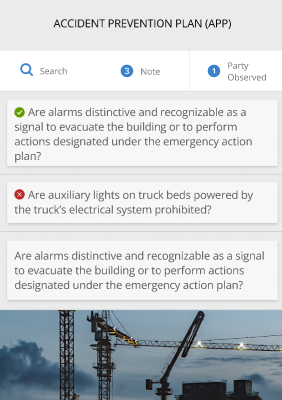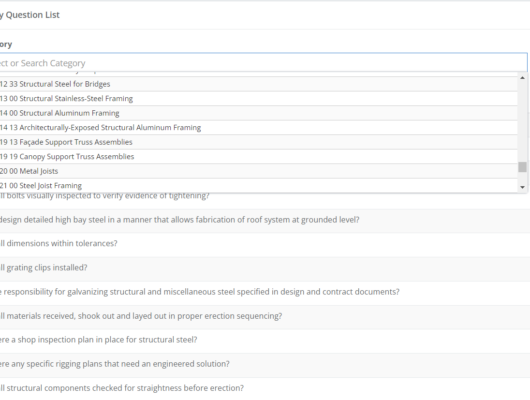By Armand Fernandez
The age old question: how safe is your parking lot? This question cannot be answered through an ordinary lens. There are variables that impact the appropriate answer. In this article I will give you the benefit of years of experience (don’t ask how many) in assessing parking and consulting with Real Estate Safety and Security clients. The merits of mitigation techniques must be expanded to include client demographics. I hope my thoughts inspire safer parking lots across the world.
I learned from assessing parking lot safety and security how difficult it is to pinpoint safety solutions without first physically assessing the parking lot condition on-site and developing an understanding of the parking lot demographics. What do I mean by demographics? Who is walking in your parking lots? What type of shoes are they wearing? What is their mobility capability? Let me dig deeper into this by having you consider this condensed an actual situation:
One hot humid day in August, I was asked to fix parking lot Slips, Trips and Falls (STF). The situation was serious with multiple injuries, head trauma, back injuries, broken hips, toes, knees, arms, all related to STFs. It seemed overwhelming, almost like an epidemic of STFs. I made my appointment, packed my slip meter and my assignment notes and headed to the site to meet the custodian who was going to accompany me on a walk through. I arrived an hour early and watched traffic patterns, walking demographics, physical conditions and made notes on parking lot lighting. Here is what I found out:
- This mall housed (2 mid rise buildings) 16 doctor offices, 5 dentist offices and 2 walk-in clinics and 1 cafeteria.
- Walking patrons were often elderly using canes, in wheelchairs, and many standard walkers wore open toe sandals.
- Parking barriers damaged with metal rebars and concrete pieces represented a trip hazard as well as severe injuries.
- Implied walkways between buildings – (one of the buildings has a cafeteria) so people cross over through the grass areas and have to cross 4 concrete curves.
- Worn out sidewalk crossing markers and signs.
- Two damaged lighting cases with burnt bulbs.
- The only ramp available (one for each building) is away from handicapped parking slots.
- Some damaged, uneven walking surfaces and a few minor potholes sprinkled throughout the parking lot.
- No security cameras, no safety patrols, no central check-in, no COVID-19 checks (just elevator capacity signs, limitations on spacing and the required masks).
You get the idea how demographics will change your analysis as you integrate your professional training, standards and best practices into one consulting package for the benefit of the client, its patrons and society in general. The parking lot conditions were unacceptable for ANY type of demographics, but the actual solution(s) had to be tailored to a specific group of folks.
Parking Lot Safety
For Slips, Trips and Fall prevention here are additional considerations:
- Are level changes marked (colored) so that level change differentiation can be perceived?
- What walking obstructions exist in direct walk paths as well as implied walkways?
- Do steps have handrails? Even if it’s not required, you must consider demographics.
- Surface type? Exterior marble area near the entrance gets quite humid and is the wrong surface for exterior surfaces (unless they are treated).
- Implied walkways in between buildings should be officially sanctioned and proper cement sidewalk constructed.
- Lighting is important when parking and walking in the evenings. Being able to see signs as well as parking obstructions that may surface on a day-to-day basis. Again, consider your demographics.
- Self Inspections are an important component of parking lot safety and security, especially in managing surface conditions.
Parking Lot Security
How secure does your parking lot need to be? Security can be an investment in loss prevention and in the case of parking lots security has a symbiotic relation with safety.
As in the case of the previously mentioned customer, security became an important step to add to the overall safety program. The physical presence of courtesy officers, security cameras, check-in station (inside the buildings), required masks and observed social distancing was a big win for the tenants as well as their clients.
Additional considerations include:
- CCTV Cameras with recording covering exterior areas
- Improved parking lot lighting
- Improved signage
- Valet parking services
- Training on incident and accident reports, witness statements and pictures
- Walk through inspections
- ADA compliance with additional ramps and access controls to buildings
- Courtesy and customer service expectations
- COVID-19 prevention check-in stations managed by courtesy officers
There are endless amounts of safety and security options that one can implement. I gave you a few ideas to hopefully spurr your thinking about parking lot safety and security. It’s not sexy because it’s where cars are parked! But a significant loss ratio can be detrimental to your liability insurance policy, especially if you are self-insured. Not to mention your brand and reputation. Eventually your clients will move if you don’t fix the problems and your occupancy rate will tumble. The holidays are almost here and it’s time to think of the crowds, COVID-19 controls and the overall condition of your parking lots. What have done to make parking lots safer?
Click here to download this article.




